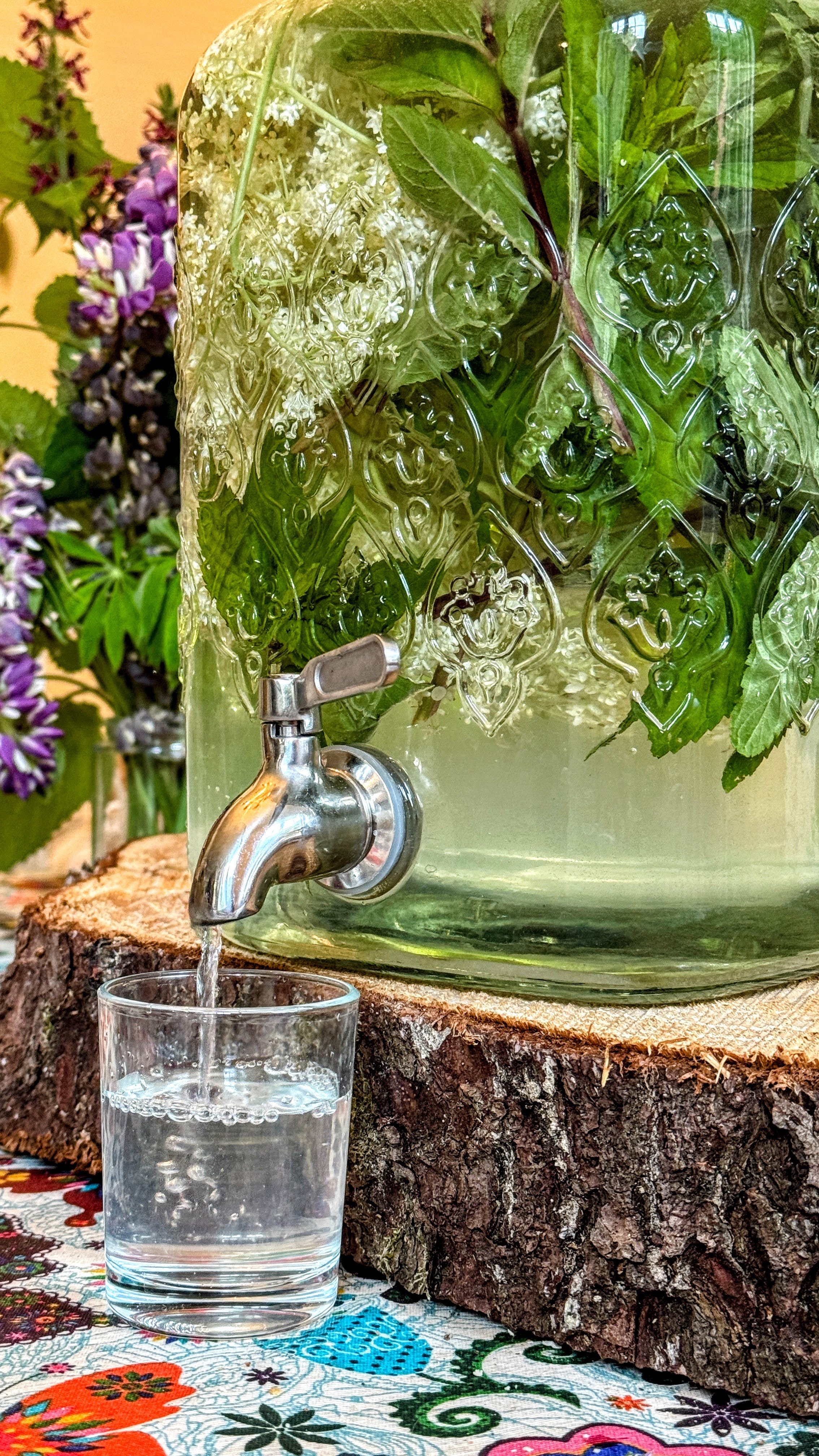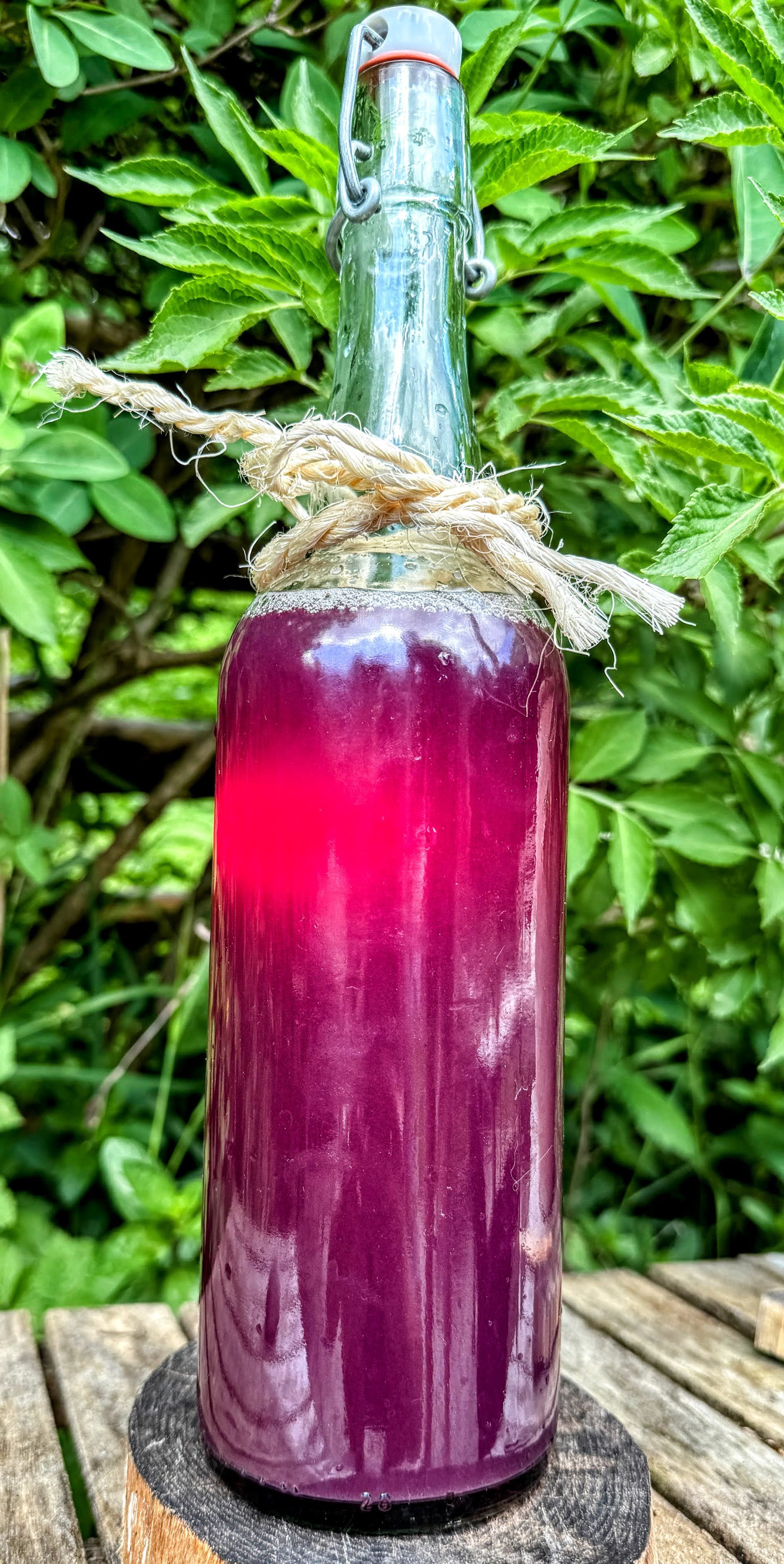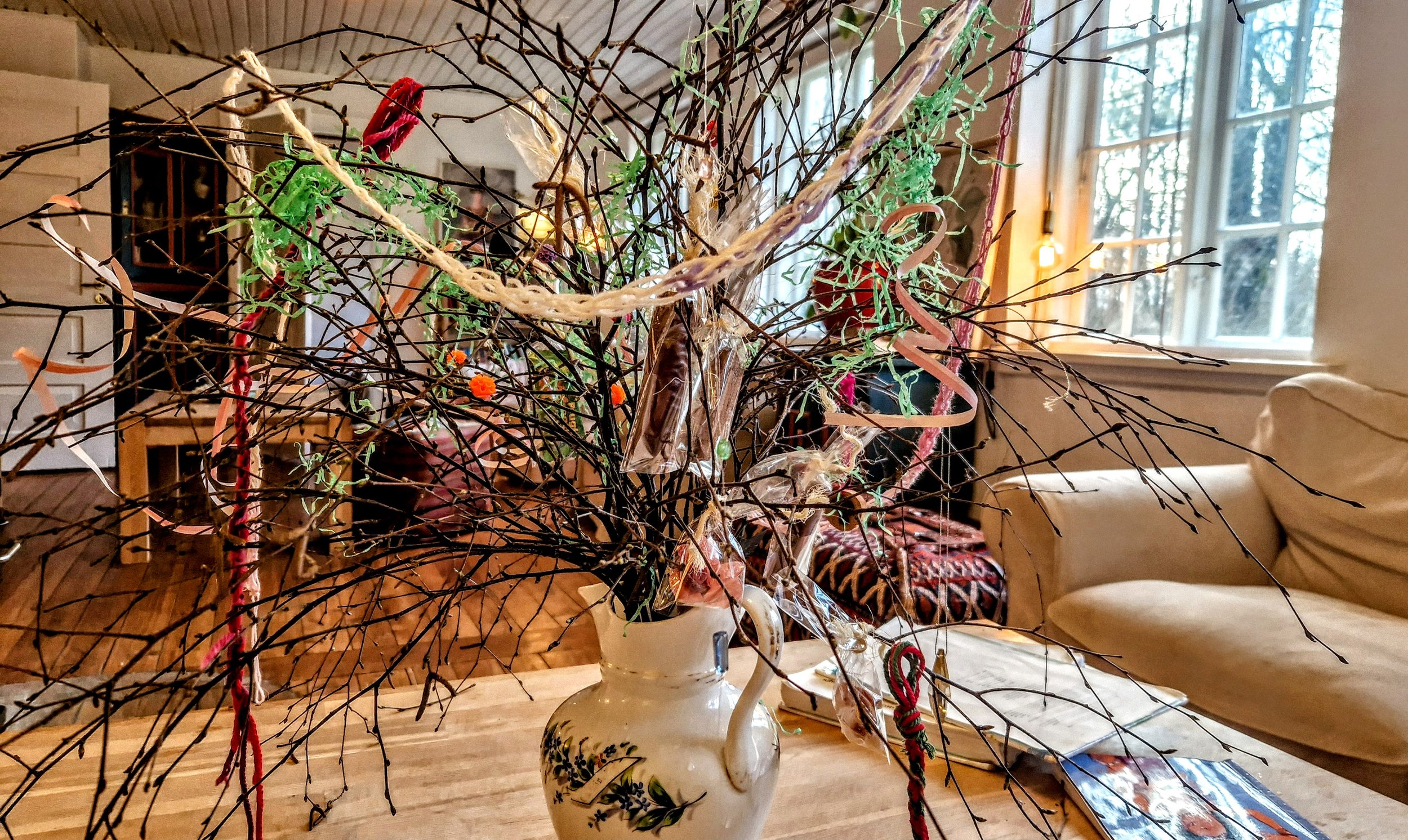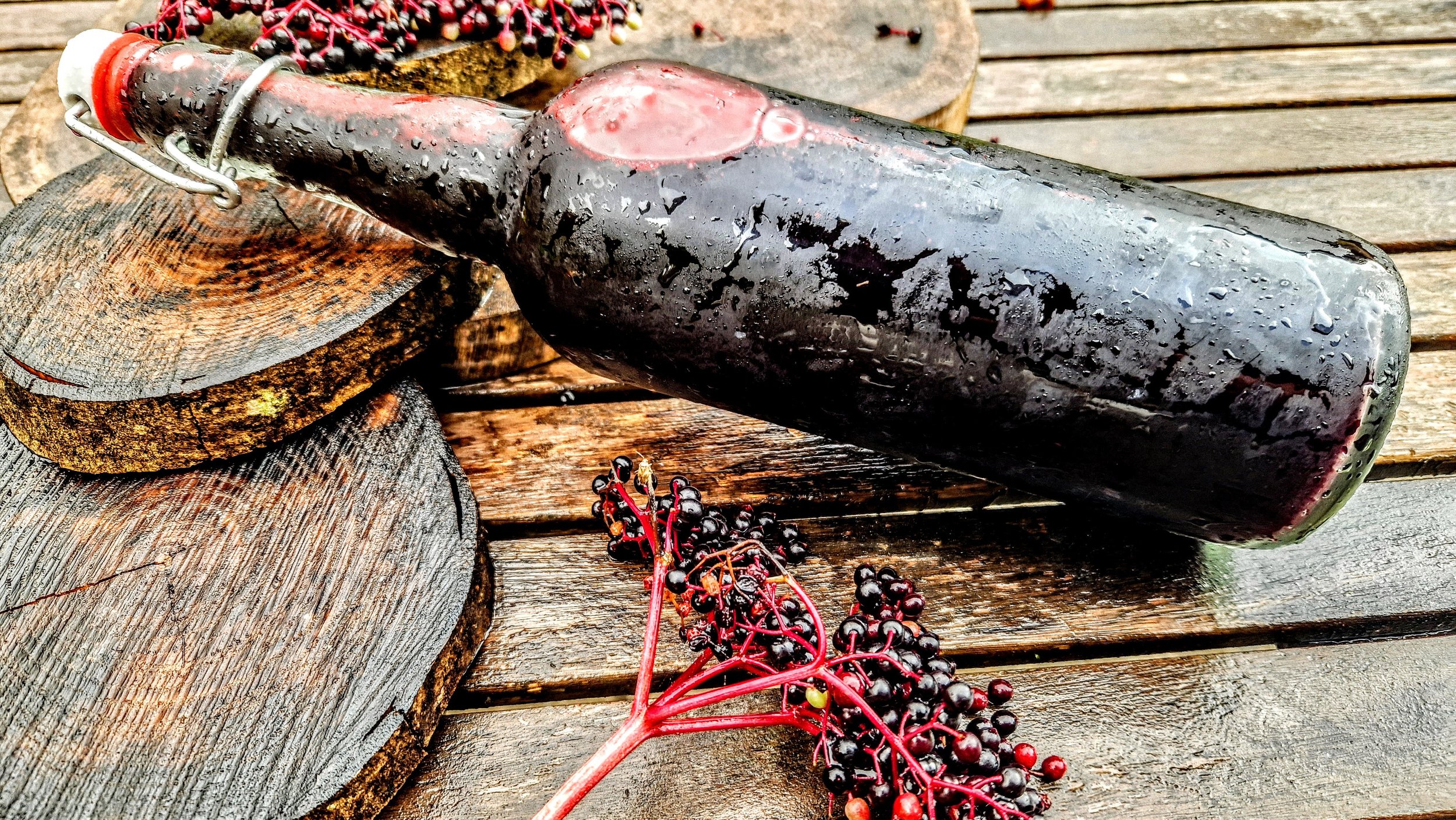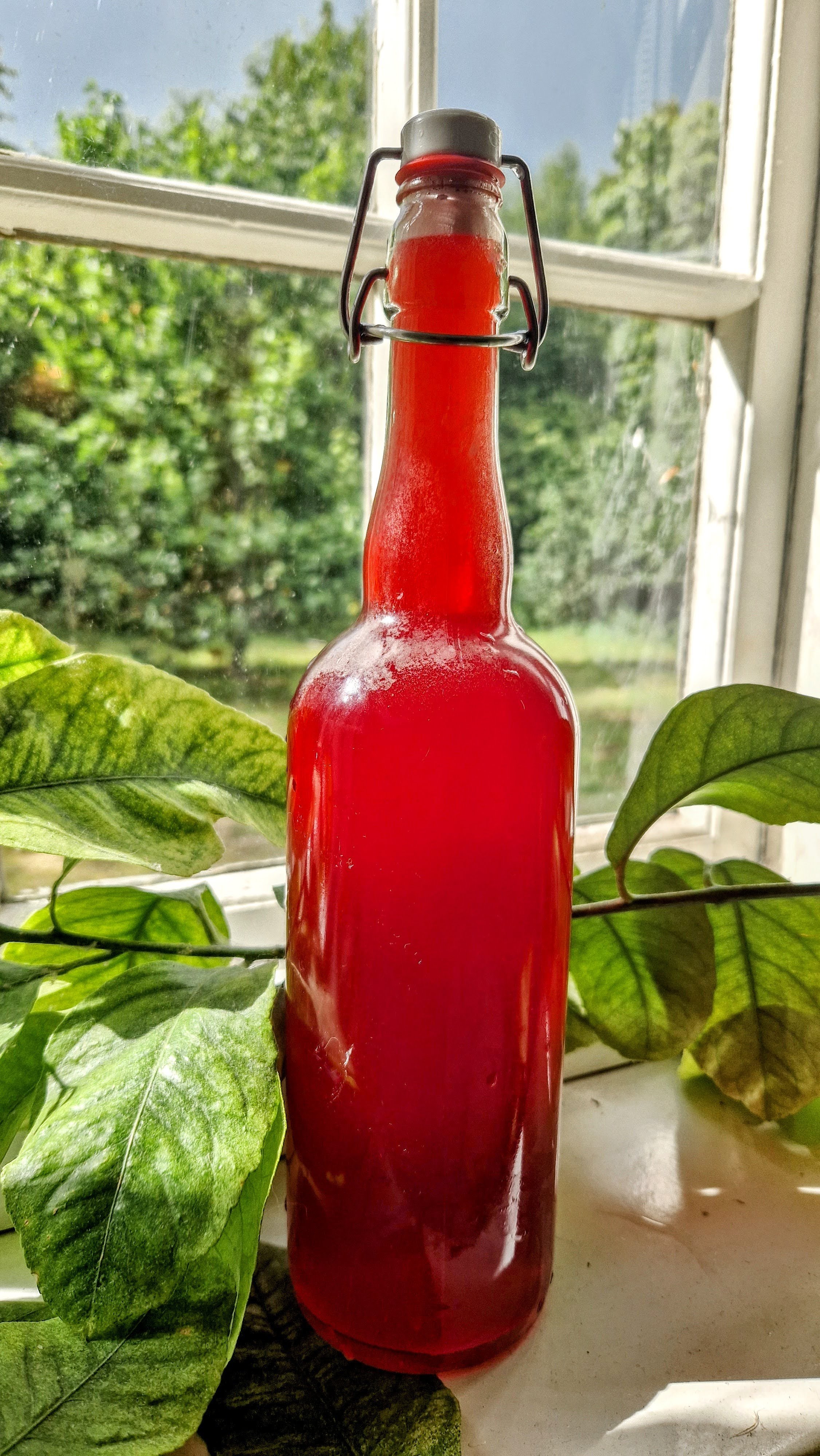Sipping spring: Freshly tapped Birch sap
As the frost of winter recedes and the first whispers of spring begin to stir the forest, one of our cherished seasonal rituals comes to the forefront—tapping birch sap. This ancient practice, which yields a sweet, woody, and utterly refreshing drink, has become a staple of our early spring Sundays, offering a natural alternative to the usual breakfast juices and milk.
The process begins with selecting the perfect birch tree, easily recognizable by its white, papery bark decorated with dark "eyes." We chose a tree with a gentle curve, an ideal characteristic that not only provides some shelter for our collection container from the rain but also ensures easy access.
Before tapping, we carefully select our tools—drill bits and steel straws—to ensure a snug fit, minimizing any harm to the tree. The key is to drill an angled hole through the bark and into the sapwood, the outer ring of the tree, avoiding going too deep into the heartwood, where damage could be more significant.
This birch tree, part of the forest we steward for firewood and more, is thriving, despite the small intrusion. We take care to ensure the tree's health isn't compromised by our tapping. A tree of this stature can easily heal from the small drill hole, ready to stand tall for many seasons to come. For those new to tapping or concerned about the impact on the tree, a less invasive method involves cutting a small branch and directing the sap flow directly into a container—a wonderful way to start this sustainable practice without harm.
Our video captures the sap's flow in the afternoon, but it's in the early morning that the sap is most abundant. From a tree of considerable size, we anticipate collecting about a gallon of sap each day over a few weeks. During this time, we not only enjoy the sap fresh but also freeze some for later and even reduce it down to a rich, flavorful syrup.
The taste of freshly tapped birch sap is a subtle delight, a gentle nudge rather than a bold proclamation. It possesses a mild sweetness, less pronounced than that of maple sap, with a clean, water-like quality that refreshes and revitalizes. There's a hint of mineraliness to it, reminiscent of clear mountain springs, lending it a complexity that belies its initial simplicity.
Tapping birch sap is more than just a means to a delightful spring beverage; it's a connection to the rhythm of the natural world, a sustainable way to enjoy the bounty of the forest, and a testament to the cycle of renewal that defines the season.










